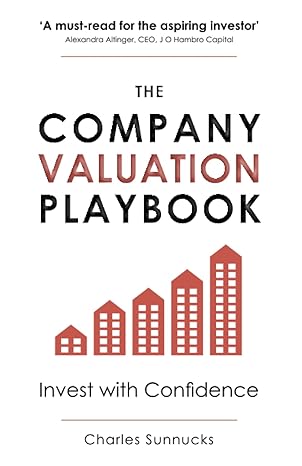Question
In the following exercise, we focus on the core mathematical problem in Asset Management and Machine Learning: Optimization. Suppose that we have financial assets R
In the following exercise, we focus on the core mathematical problem in Asset Management and Machine Learning: Optimization.
Suppose that we have financial assets R with:
Expected Return: =E(R)
Covariance Matrix:
And other higher order statistics: skew, kurt, VaR() , etc.
We would like to decide the best way to invest in those assets quantitatively with this information.
Questions:
(theoretical)
As an asset manager, how can you decide how much to invest in each assets? Explain briefly the well-known Mean Variance Framework and other methods (if possible).
(practical)
Recall the Mean Variance Framework Optimization.
Simulate (, ) above with the number of assets n=3 and do the simulation in the programming language that you prefer. You can do a notebook or presentation (pptx/ latex + script), etc.
Hint 1: You would like to give some reasonable theoretical values of (, )
Hint 2: Then, simulate the data (random walk) of those assets based on the theoretical parameters. You also want to split the simulated data into train set and test set.
Hint 3: Then, the reestimation of empirical parameters and optimization will be done on train set and evaluate the performance of the investment solution on test set. Evaluate the performance of this solution.
Hint 4: you may want to try 3 versions of optimization:
(C1): Only constraint: asset weights sum is equal to 1
(C2): C1 + no short selling constraint
(C3): C1 + Number of optimized assets is less than 2
Hint 5: Dont forget to:
Plot the simulated series
Calculate the usually used statistics of the simulated series/ solution in train and test period.
(practical)
Now we do the optimization of Q2 in ignoring expected return (i.e. setting =0).Dont forget the constraints (C1), (C2) above.
What is the purpose of this optimization ?
(theoretical)
Explain the effect of the constraints above (C1), (C2) and (C3) on the solution of the optimization.
If we dont calculate (using analytical formula / numerical method), only taking a look of (for example, in case of n= 3), can you guest how much the assets we should invest in ? Give your explanation if you can.
In case !=0 (Q2)
In case =0 (Q3)
In both case, consider the presence of: (C1), (C2), (C3)
(bonus)
What are the differences betweens: Asset Manager and Trader. According to you, what are the types of Asset manager and Trader.
Step by Step Solution
There are 3 Steps involved in it
Step: 1

Get Instant Access to Expert-Tailored Solutions
See step-by-step solutions with expert insights and AI powered tools for academic success
Step: 2

Step: 3

Ace Your Homework with AI
Get the answers you need in no time with our AI-driven, step-by-step assistance
Get Started


